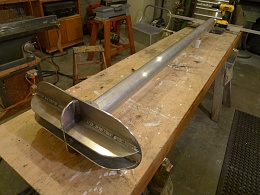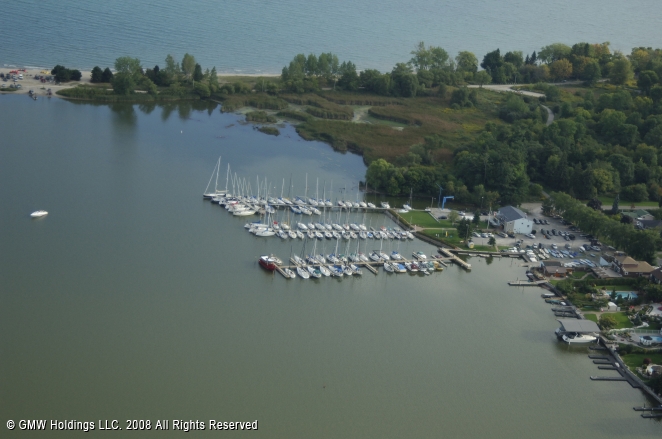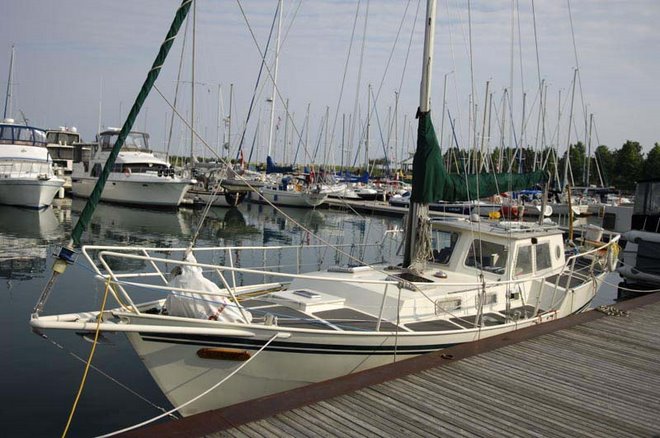 |
| The traditional nautical pastime of getting a leg under. Photo (c) atomvoyages.com |
One thing last fall's trip to France exposed me to was loads of French beach or beach fascimile (or rocks and limpets and muck) revealed by the somewhat pronounced tidal range of south-east Brittany. It's dependable in that it's well-calculated for most spots (thanks,
Bloc Marine) and ranges from about 4.5-6 metres over the lunar month and the state of the winds and so on.
Now, while in certain circumstances, a large tidal range represents a complication, it also represents an opportunity, as many British and French and Atlantic and Pacific Canadian sailors understand. Sure, the currents of metres of sea water coming and going in vast, sometimes wind-aided volumes can be hard to sail in, but can also, of course, speed your boat in or out of its particular destination. Travelling at about five knots under motor, but 11 knots with the tide, can be a bit of a rush.
 |
| Cardiff Bay Tidal Barrage: Aside from all this water stuff, it cuts two miles off the bike ride to Penarth! |
The British, and others with large tidal ranges, such as I saw in Brittany, have dealt with their large number of
drying height tidal opportunities in a variety of ways: sometimes through
tidal gates that "seal in the sea" so that a harbour is essentially locked and does not dry (and cannot be entered or left unless the height of tide allows it).
Such a scheme is in effect in Cardiff Bay, and other sorts of tidal barrages
are rigged with water turbines that capture the energy in a dropping tide in a controlled fashion. Minas Bay, off the more famous Bay of Fundy,
is seeing this sort of renewable energy project.
 |
| The Bay of Fundy is a logical place to make tidal power. This is the plant at Annapolis Royal. |
Which, from the viewpoint of those keen on renewable energy and not seeing stinky harbour bottoms, is all well and good. But what if there were compelling reasons to
deliberately "beach" one's boat?
 |
| Ar, scrub the barnacles, ye scurvy pre-industrialist workforce! |
The proper, or least saltier, word for letting the tide gradually lay a boat down on its side is
careening. or "heaving down". It was about the only way, short of entering one of the rather rare dry dock facilities available prior to the 20th century, to scrap marine growth from the bottom, to replace rotten planking, or to do the sort of caulking needed to keep the sea away from the cargo through leaks.
 |
| This is easier for full-keelers because they don't tend to heel over enough to have a porthole or hatch below the waterline when the refloat. Photo (c) S/V Moulin-Rouge. |
In some places, when the weather is calm and the shoreline pointy-rock-free and of the right angle, careening is a good way to clean the bottom, service the prop and ream out the through-hulls. But it's not always easy to find the right combination of protected and properly pitched shoreline, convenient tidal range, and water that won't freeze your nuts off; this is why decent careening spots are often marked, to this day, on the better sort of charts. It was part of the "commons of the sea" as everyone with a boat had to get at their hulls sometime, and
diving, where even invented, was dubious for the first few centuries.
Also, in most careening situations, it can be hard to impossible to paint or to effectively scrap the last foot or two of the keel as it will never be fully dry. And you have to do the whole process twice...because only one side of the hull will dry out per tide.
 |
| I'm guessing "Malaysia"...the travelift, not the boat. |
While the usual cruising boat tactic involves the sort of strap and hoist affair of the
Travelift system pictured above, followed by
jackstands and
cradling on land, the
admittedly efficient process isn't cheap and Travelifts themselves aren't necessarily common once away from Western ports and the richer sort of marina or yacht club.
Another primarily British method of getting at the bottom of the boat when the tide is out is the twin or bilge keel design. Consisting of two keels offset from the centreline of the hull, and a strong, slightly shorter rudder, bilge keelers will happily sit on the exposed sea floor, allowing all sorts of necessary maintenance.
 |
| A slightly faster looking twin keeler. |
Utilitarian as this is, they aren't great sailers due to the drag of two keels, and while I'm not entirely sure about this, they don't seem to show up on boats over 30 feet in length, probably because the heavier sort of boat would require far too large and strong twin keels to support the mass of the rest of the hull, which would create even more drag, and drag in a hull is generally the opposite of fun.
Here's where the "beaching leg" comes in. It's a extendable adjustable aluminum sleeved pipe, in essence, with a load-spreading "foot" and tensioned lines to keep it vertical. The main weight of the boat rests on its keel and the legs only have to provide balance, in the same fashion as the training wheels on a child's bike.
 |
| It's engineering, sure, but it's not rocket science. It's basically a strut. (c) S/V Panope |
There's no particular reason why one couldn't make them oneself, and in fact, that is where I got the idea: from a Cruisers' Forum thread on
making one's own beaching legs, although I had seen them mentioned on occassion in the more obscure cruiser narratives. The poster named "Panope", who has
an interesting refit thread of his own here, has a boat perhaps even more densely built than
Alchemy,
 |
| There's a family resemblance, I will admit. Photo (c) S/V Panope. |
It's a Colvin 34 and it is clearly a labour of love. But as is so often the case when I see gifted craftspeople with intriguing boat ideas, it's the little self-starter projects that catch my eye. Beaching legs could be stowed on deck and rigged at the pipe gunwhales of
Alchemy in a rather straightforward manner: I have the one-inch bolts and enough spare quarter-inch SS wire to do the job...I would just need about $300 of aluminum plate and tubing. I like the idea of not having to haul out for minor fixes, painting or prop servicing. While I'm sure they do fine work, if the prices listed
here are a guide, I would be willing to try my hand at making my own from plate aluminum and pipe. I already know we have a good keel bottom for this sort of setup. So perhaps
Alchemy will one day stand proud with the tide out, and we'll have the boat with the nicest legs in the harbour.
 |
| The less-confidence-inspiring single-leg option. Hope it stays calm. |












































